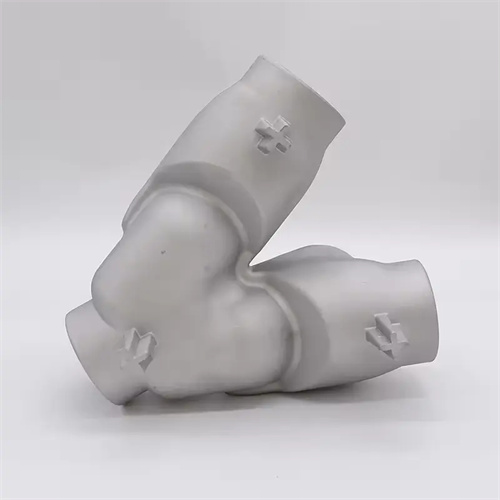The role of die casting coating
Die-casting coatings play an indispensable role in die-casting production. Their primary function is to ensure smooth demolding of the casting from the mold, preventing defects such as deformation and strain caused by mold sticking. During the die-casting process, when the high-temperature molten metal contacts the cold mold surface, a strong heat exchange occurs due to the temperature difference. At the same time, certain components in the molten metal may chemically react with the mold material, causing the casting to adhere to the mold cavity surface. When die-casting coatings are applied to the mold surface, they form a barrier film that blocks direct contact between the molten metal and the mold, reducing the affinity between the two. For example, in aluminum alloy die-casting, without the use of coatings, the casting surface easily adheres to the mold, leaving noticeable scratches on the casting surface during demolding, and even causing the casting to break. However, when a coating containing graphite is applied, the barrier film effectively reduces adhesion, allowing the casting to easily release from the mold, significantly improving surface quality.

Die-casting coatings can effectively protect molds and extend their lifespan. When high-temperature molten metal enters the mold cavity at high speed, it exerts intense thermal shock and mechanical erosion on the mold surface. Over time, these effects can lead to wear, cracking, and even deformation. The coating formed by die-casting coatings offers excellent thermal insulation properties, reducing the amount of heat transferred from the molten metal to the mold, lowering the mold’s thermal load and mitigating thermal fatigue damage. Furthermore, the coating’s lubricating effect reduces friction and erosion forces on the mold surface, minimizing mechanical wear. Data from a die-casting company shows that using high-quality die-casting coatings has extended the average mold lifespan from 50,000 cycles to 80,000, significantly reducing mold replacement frequency and production costs. Furthermore, for molds with complex cavities, the coating can fill minor pits and scratches on the mold surface, reducing molten metal retention and adhesion in these areas, further protecting the mold’s integrity.

Die-casting coatings significantly improve the surface quality of castings, reducing surface defects such as porosity, cold shuts, and shrinkage. When molten metal enters the coated mold cavity, the coating’s lubricating effect allows for smoother flow, minimizing turbulence and air entanglement, thereby reducing the likelihood of surface porosity. Furthermore, the coating’s thermal insulation properties slow the cooling of the molten metal, maintaining good fluidity during the filling process and ensuring that every corner of the cavity is fully filled, avoiding defects such as cold shuts and under-casting. For example, when producing thin-walled, complex zinc alloy die-castings without coating, rapid cooling of the molten metal often results in cold shuts. However, using an appropriate coating improves the fluidity of the molten metal, enabling more complete filling and reducing cold shut defects by over 70%. Furthermore, coatings reduce scale and burrs on the casting surface, reducing the workload of subsequent cleaning.

Die-casting coatings can regulate the temperature distribution across the mold, promoting uniform solidification and improving dimensional accuracy. During the die-casting process, heat dissipation conditions vary across different mold sections, leading to inconsistent cooling rates across the casting and potentially causing internal stress and dimensional deviation. The thermal insulation properties of die-casting coatings can be adjusted by adjusting the coating thickness to regulate mold temperature. For thin-walled areas where heat dissipates quickly, the coating thickness can be increased to enhance insulation and slow the cooling of the molten metal. For thicker areas where heat dissipates slowly, the coating thickness can be reduced to accelerate cooling and achieve uniform solidification rates across the casting. For example, in the production of aluminum alloy castings with slender ribs, the mold area corresponding to the ribs dissipates heat quickly. By spraying a thicker coating in this area, the cooling rate of the molten metal in the ribs is aligned with that of the main casting, reducing rib deformation caused by differential shrinkage and improving the dimensional accuracy of the casting by 15% to 20%.

Die-casting coatings can also reduce energy consumption and improve production efficiency during the die-casting process. The coating’s lubricating effect reduces demolding resistance and lowers the power consumption of the die-casting machine. Furthermore, the coating’s protective effect on the mold extends mold maintenance cycles and reduces downtime caused by mold maintenance. Furthermore, the use of the coating significantly improves the qualified rate of castings, reduces scrap rates, and reduces the waste of raw materials and energy. For example, after introducing high-performance die-casting coatings, an automotive parts die-casting plant saw its casting scrap rate drop from 10% to 3%. This not only conserves a significant amount of aluminum alloy raw materials but also reduces the need for remelting scrap, saving approximately 5,000 kWh of electricity per month. Furthermore, the coating makes the demolding process smoother, shortens the production cycle for each casting, and, under the same equipment conditions, increases production efficiency by approximately 10%. These combined benefits enable die-casting companies to reduce production costs while improving their market competitiveness.
